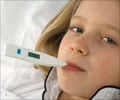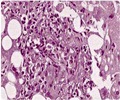A new study by NASA scientists has determined that an early warning system, more than a decade in development, successfully predicted the 2006-2007 outbreak of the deadly Rift
A new study by NASA scientists has determined that an early warning system, more than a decade in development, successfully predicted the 2006-2007 outbreak of the deadly Rift Valley fever virus in northeast Africa.
Rift Valley fever is unique in that its emergence is closely linked to interannual climate variability.Utilizing that link, researchers used a blend of NASA and National Oceanic and Atmospheric Administration measurements of sea surface temperatures, precipitation, and vegetation cover to predict when and where an outbreak would occur.
The research team included Assaf Anyamba, a geographer and remote sensing scientist with the University of Maryland Baltimore County and NASA's Goddard Space Flight Center in Greenbelt, Maryland.
The final product, a Rift Valley fever "risk map," gave public health officials in East Africa up to six weeks of warning for the 2006-2007 outbreak, enough time to lessen human impact.
The first-of-its-kind prediction is the culmination of decades of research.
During an intense El Nino event in 1997, the largest known outbreak of Rift Valley fever spread across the Horn of Africa.
Advertisement
The 1997 outbreak provoked the formation of a working group, funded by the U.S. Department of Defense Global Emerging Infections Surveillance and Response System, to see if predictions of an outbreak could be made operational.
Advertisement
Then, a subsequent 1999 Science paper described link between the disease and the El Nino-Southern Oscillation (ENSO).
Building on that research, Anyamba and colleagues set out to predict when conditions were ripe for excessive rainfall, and thus an outbreak.
They started by examining satellite measurements of sea surface temperatures.
One of the first indicators that ENSO will bring an abundance of rainfall is a rise in the surface temperature of the eastern equatorial Pacific Ocean and the western equatorial Indian Ocean.
But perhaps the most telling indicator of a potential outbreak is a measure of the mosquito habitat itself.
The researchers used a satellite-derived vegetation data set that measures the landscape's "greenness."
The final product is a risk map for Rift Valley fever, showing areas of anomalous rainfall and vegetation growth over a three-month period.
Source-ANI
SRM













